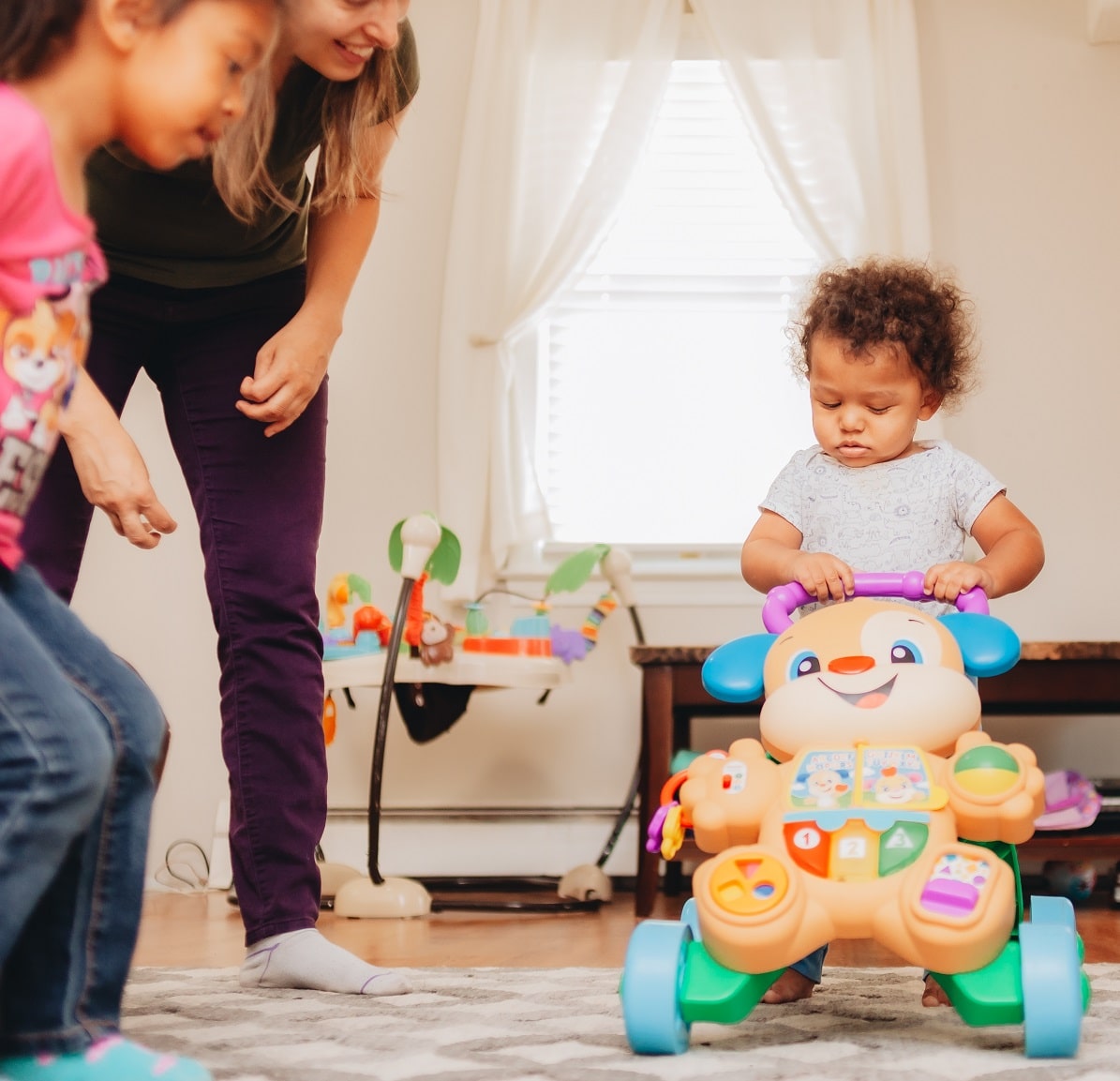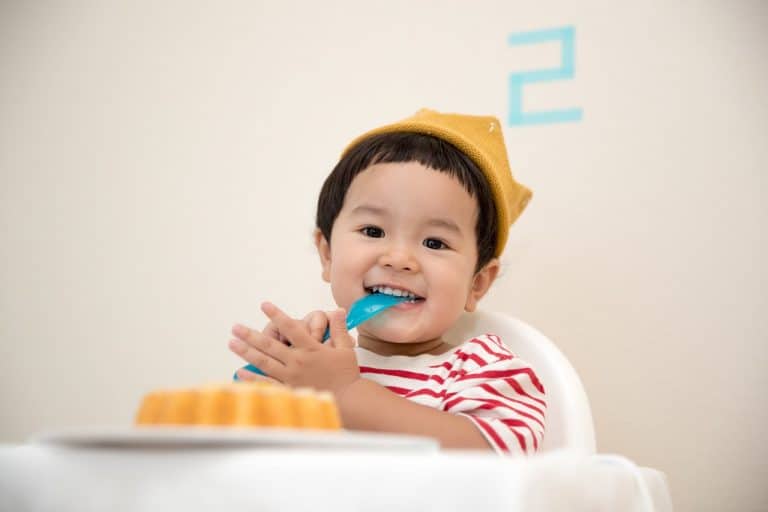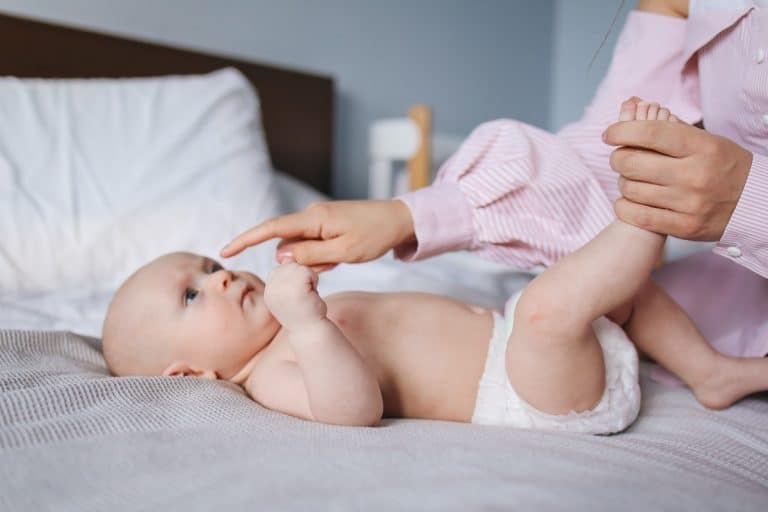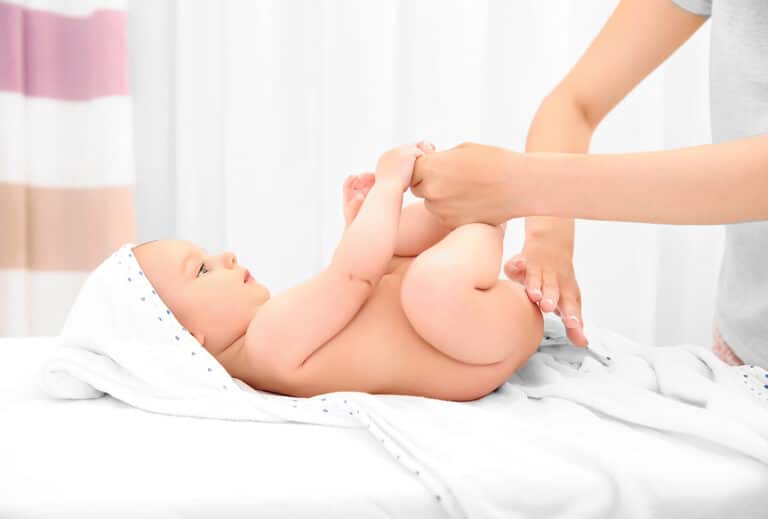Baby walkers have been a popular item for many parents when it comes to helping their babies learn how to walk. Many parents believe that babies walk sooner if they use a walker. Baby walkers have been designed with a seat suspended in the middle of a frame that has wheels attached to the bottom. The baby sits in this seat and uses their feet to push themselves around. However, despite its popularity, there has been concern over the safety of baby walkers. Is it safe for babies to use a walker? In this blog, we will discuss everything you need to know about using baby walkers for your child.
Key Takeaways:
- Baby walkers have been designed to help babies learn how to walk by pushing themselves around with their feet.
- The American Academy of Pediatrics (AAP) recommends against the use of baby walkers due to safety concerns.
- Built-in toys and wheels on baby walkers can increase the risk of accidents and injuries.
- Babies may develop a false sense of independence and may not learn proper walking skills while using a walker.
In This Article
What is a baby walker?
A baby walker is a device designed to assist infants in moving around before they are able to walk independently. It consists of a frame with a seating area, usually made of fabric or plastic, supported by wheels. The seat allows the baby to sit upright while using their feet to propel themselves forward. Baby or infant walkers often come equipped with interactive toys and activities to entertain the child as they explore their surroundings.
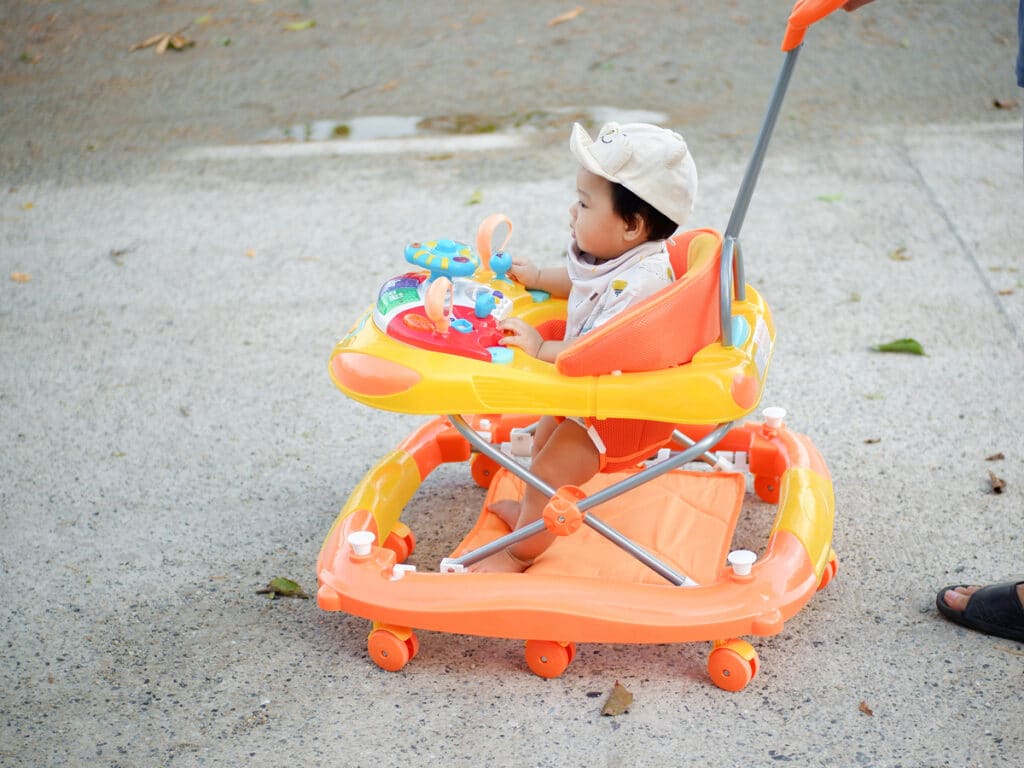
Are baby walkers safe to use?
While walkers can provide entertainment and promote mobility, they also pose several risks to infants. The American Academy of Pediatrics (AAP) strongly discourages the use of baby walkers due to the potential for accidents and injuries. For a baby’s development, walkers can actually delay the natural process of learning to walk and may delay the development of necessary motor skills.
However, parents who choose walkers argue that with proper supervision and caution, they can be safe and beneficial. They believe that walkers can help with a baby’s development and provide a safe and secure environment for their child to explore their surroundings. For that, experts suggest selecting a walker with adjustable height and a wide base for added stability.
Hence, a child’s safety should always be the top priority, and it is essential to carefully consider all aspects before using a baby walker. Along with proper supervision, parents should also ensure that the walker meets safety features and standards to minimize the risk of accidents and injuries.
What potential risks do baby walkers pose to infants?
Baby walker usage has been associated with a range of potential risks for infants. Some common accidents and injuries that can occur while using a walker include:
- Falls downstairs: One of the most significant dangers associated with baby walkers is the risk of falling downstairs. The mobility provided by the wheels can enable infants to reach dangerous areas, leading to severe injuries.
- Collision hazards: Baby walkers can increase the likelihood of collisions with objects and furniture, potentially causing head injuries, bumps, and bruises.
- Burns and scalds: Babies tend to move towards kitchen areas while using a walker, increasing the risk of burns from hot appliances, liquids, and other hazards.
- Drowning hazards: If left unsupervised, babies in walkers can access water sources such as pools, bathtubs, or buckets, increasing the risk of drowning.
- Entanglement and strangulation: At a young age, babies are curious and may reach out for items that can be hazardous, such as cords or strings. If caught on the wheels of the walker, these items can pose a risk of strangulation or entanglement.
- Delayed motor development: Excessive reliance on baby walkers can impede the natural progression of a baby’s motor skills, potentially leading to delays in crawling, standing, and walking.
- Cognitive and social development: Spending significant time in a baby walker may restrict a baby’s exploration and interaction with their environment, which is crucial for cognitive and social development.
What benefits does a walker offer babies?
If you use a baby walker correctly, it can provide several benefits for your child’s development. While promoting independent walking, baby walkers provide some other advantages as well:
- Mobility and independence: Baby walkers give infants the freedom to move around independently and explore their surroundings.
- Entertainment and stimulation: Walkers often come equipped with toys and activities that provide entertainment and stimulate the baby’s senses.
- Parental relief: Walkers can offer parents a break from constantly carrying or holding their baby, allowing them to attend to other tasks.
- Physical exercise: Using a walker can provide some physical exercise for babies, helping them develop strength and coordination.
- Improved posture: The seated position in a walker can help babies develop proper posture and core strength. Ensure to buy a walker according to your baby’s age or baby’s weight for appropriate physical development.
- Spatial awareness: Navigating their environment in a walker can enhance a baby’s spatial awareness and depth perception.
- Encourages curiosity: Walkers can encourage babies to explore their surroundings and satisfy their natural curiosity about the world.
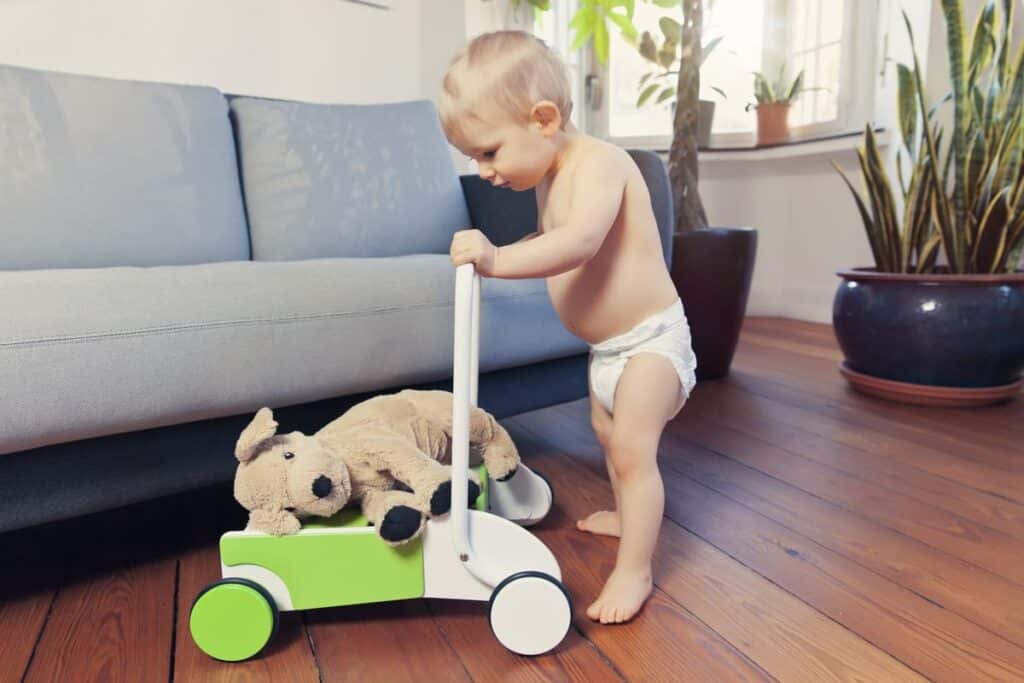
What are some safe alternatives to baby walkers?
Babies learn to walk at different ages, and it is essential to provide them with a safe environment to explore and develop their motor skills. Some safe alternatives to baby walkers include:
- Play mats and activity centers: These provide a cushioned and stimulating surface for babies to engage with toys and activities while building strength and coordination. To avoid serious injury, make sure the play mat is free of any choking hazards.
- Push toys: Push toys, such as wooden wagons or strollers, enable babies to practice balance and coordination while pushing themselves along. To walk behind toys, babies must be able to stand on their own, promoting independence and muscle development.
- Baby bouncers: Baby bouncers allow infants to bounce and kick while being supported in an upright position. Ensure appropriate age and weight restrictions when selecting a bouncer to avoid potential injuries.
- Stationary activity centers: These allow babies to stand and play with interactive toys, encouraging muscle development and balance.
- Baby jumpers: Baby jumpers attach to a doorway and provide babies with a safe way to bounce and strengthen their legs. As with bouncers, make sure to follow the child’s age and weight restrictions.
- Push walkers: Push walkers with wheels can help babies develop their balance and coordination as they learn to walk with support. For your baby’s leg muscles growth and development, make sure the push walker is appropriate for their age and size.
- Sturdy Wagons: Sturdy Wagons allow babies to sit and explore their surroundings safely without the risk of falling over. Make sure the wagon has a secure seat and high sides to prevent accidents.
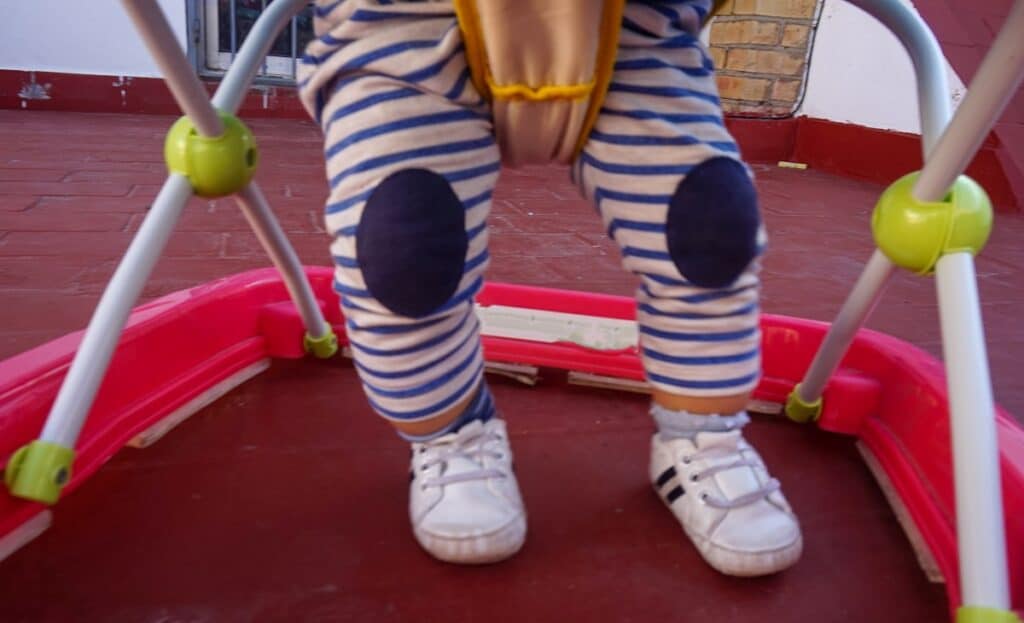
Tips to consider while using a baby walker
Following the safety guidelines while using a baby walker can significantly reduce the risks associated with its usage. Here are some tips to keep in mind:
- Always choose a walker that meets safety standards and features recommended by experts.
- Follow the age, weight, and height restrictions mentioned by the manufacturer.
- Do not leave your baby unattended in a walker, even for short periods.
- Keep an eye on your baby at all times while using a walker.
- Use the walker on an even and flat surface to prevent tipping over.
- Ensure that the wheels are locked before placing your baby in the walker.
- Keep dangerous objects such as cords, sharp objects, and hot liquids away from your child’s reach.
- Do not use a baby walker near stairs or any other potential fall hazards.
- If you use baby carriers or swings, avoid using them at the same time as a walker.
- Discontinue using the walker once your child starts walking independently or reaches the weight limit recommended by the manufacturer.
- To prevent serious injuries, always supervise your child’s movements in the walker and never leave them alone with pets.
- Regularly check for any wear and tear on the walker and replace or repair any damaged parts immediately.
- Ensure to attached toys and accessories are securely fastened to the walker to prevent choking hazards.
- Always read and follow the manufacturer’s instructions for proper assembly, usage, and maintenance of the walker.
- Lastly, remember that a walker should not be used as a substitute for proper adult supervision and interaction with your baby.
Conclusion
To sum it up, baby walkers can provide several benefits for babies’ development if used correctly and under adult supervision. However, parents must also be aware of the potential risks associated with their usage and take necessary precautions to prevent accidents and injuries. With proper safety measures and guidelines, a baby walker can be an excellent tool for promoting independent movement and exploration for babies. As always, prioritize your child’s safety above all else!

